| Listing 1 - 10 of 182 | << page >> |
Sort by
|
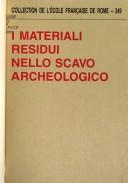
ISBN: 2728305722 9782728305728 Year: 1998 Volume: 249 Publisher: Rome: École française de Rome,
Abstract | Keywords | Export | Availability | Bookmark
 Loading...
Loading...Choose an application
- Reference Manager
- EndNote
- RefWorks (Direct export to RefWorks)
Excavations (Archaeology) --- Fouilles (Archéologie) --- Rome (Italy) --- Antiquities --- -Archaeological digs --- Archaeological excavations --- Digs (Archaeology) --- Excavation sites (Archaeology) --- Ruins --- Sites, Excavation (Archaeology) --- Archaeology --- -Antiquities --- -Rome (Italy) --- Fouilles (Archéologie) --- Archaeological digs --- Congresses --- Excavations (Archaeology) - Italy - Rome - Congresses --- Rome (Italy) - Antiquities - Congresses

ISBN: 9179160476 9789179160470 Year: 2003 Volume: 51 51 Publisher: Stockholm: Svenska institutet i Athen,
Abstract | Keywords | Export | Availability | Bookmark
 Loading...
Loading...Choose an application
- Reference Manager
- EndNote
- RefWorks (Direct export to RefWorks)
Excavations (Archaeology) --- Asea Valley (Greece) --- History --- Antiquities --- Archaeological digs --- Archaeological excavations --- Digs (Archaeology) --- Excavation sites (Archaeology) --- Ruins --- Sites, Excavation (Archaeology) --- Archaeology --- Antiquities. --- History. --- Excavations (Archaeology) - Greece - Asea Valley --- Asea Valley (Greece) - History --- Asea Valley (Greece) - Antiquities
Book

ISBN: 9782874631641 2874631647 2875581708 2874635324 Year: 2009 Volume: 1 Publisher: Louvain-la-Neuve: UCL. Presses universitaires de Louvain,
Abstract | Keywords | Export | Availability | Bookmark
 Loading...
Loading...Choose an application
- Reference Manager
- EndNote
- RefWorks (Direct export to RefWorks)
During 2007 and 2008, the Belgian School at Athens undertook its first ever excavation on Crete, at the Minoan site of Sissi on the north coast of the island. Located at a few kilometres from the palatial site of Malia, the Sissi settlement presents aique test caSe to examine the relationship between a palace site and its hinterland during the Bronze Age (2600-1250BC). This volume gives some preliminary results of the two first excavation campaigns as well as an introduction on earlier explorations at Sissi, a report on the topography and some of the techniques used during the work. There is also a report on the Late Minoan pottery.
Antiquities. --- Architektur. --- Ausgrabung. --- Excavations (Archaeology) --- Excavations (Archaeology). --- Keramik. --- Minoische Kultur. --- Greece --- Sissi (Greece) --- Sissi. --- Archaeological digs --- Archaeological excavations --- Digs (Archaeology) --- Excavation sites (Archaeology) --- Ruins --- Sites, Excavation (Archaeology) --- Archaeology --- Sisi (Greece) --- Sissi --- fouilles archéologies --- excavation --- Kephali
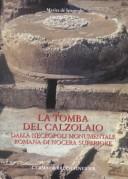
ISBN: 888265060X 9788882650605 Year: 2000 Volume: 106 Publisher: Roma: L'Erma di Bretschneider,
Abstract | Keywords | Export | Availability | Bookmark
 Loading...
Loading...Choose an application
- Reference Manager
- EndNote
- RefWorks (Direct export to RefWorks)
Excavations (Archaeology) --- Tombs --- Nocera Superiore (Italy) --- Antiquities, Roman --- Archaeological digs --- Archaeological excavations --- Digs (Archaeology) --- Excavation sites (Archaeology) --- Ruins --- Sites, Excavation (Archaeology) --- Archaeology --- Antiquities, Roman. --- Excavations (Archaeology) - Italy - Nocera Superiore --- Tombs - Italy - Nocera Superiore --- Nocera Superiore (Italy) - Antiquities, Roman

ISBN: 0123266513 1483295850 9781483295855 9780123266514 Year: 1979 Publisher: London, England
Abstract | Keywords | Export | Availability | Bookmark
 Loading...
Loading...Choose an application
- Reference Manager
- EndNote
- RefWorks (Direct export to RefWorks)
This book is the only text devoted entirely to archaeological stratigraphy, a subject of fundamental importance to most studies in archaeology. The first edition appeared in 1979 as a result of the invention, by the author, of the Harris Matrix--a method for analyzing and presenting the stratigraphic sequences of archaeological sites. The method is now widely used in archaeology all over the world.The opening chapters of this edition discuss the historical development of the ideas of archaeological stratigraphy. The central chapters examine the laws and basic concepts of the subject, and the l
Géoarchéologie --- Fouilles (Archéologie) --- Stratigraphie. --- Methodologie. --- Archaeological geology --- Excavations (Archaeology). --- Methodology. --- Excavations (Archaeology) --- Archaeological digs --- Archaeological excavations --- Digs (Archaeology) --- Excavation sites (Archaeology) --- Ruins --- Sites, Excavation (Archaeology) --- Archaeology --- Archaeogeology --- Geoarchaeology --- Geological archaeology --- Geology --- Géoarchéologie - Methodologie.
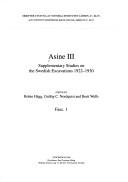
ISSN: 05860539 ISBN: 9789179160562 9179160328 9789179160326 9179160565 Year: 2008 Volume: 45/2 45/2 Publisher: Stockholm: Svenska institutet i Athen,
Abstract | Keywords | Export | Availability | Bookmark
 Loading...
Loading...Choose an application
- Reference Manager
- EndNote
- RefWorks (Direct export to RefWorks)
Excavations (Archaeology) --- Asine (Argolis, Greece : Extinct city) --- Asine (Argolis, Greece : Ancient city) --- -Asine (Argolis, Greece : Extinct city) --- Archaeological digs --- Archaeological excavations --- Digs (Archaeology) --- Excavation sites (Archaeology) --- Ruins --- Sites, Excavation (Archaeology) --- Archaeology --- Greece --- Antiquities --- Excavations (Archaeology) - Greece - Asine (Argolis : Extinct city)
Book
ISBN: 8882650537 9788882650537 Year: 1999 Volume: 26 Publisher: Roma: L'Erma di Bretschneider,
Abstract | Keywords | Export | Availability | Bookmark
 Loading...
Loading...Choose an application
- Reference Manager
- EndNote
- RefWorks (Direct export to RefWorks)
Excavations (Archaeology) --- Rome (Italy) --- Antiquities --- Archaeological digs --- Archaeological excavations --- Digs (Archaeology) --- Excavation sites (Archaeology) --- Ruins --- Sites, Excavation (Archaeology) --- Antiquities. --- Buildings, structures, etc. --- Archaeology --- Excavations (Archaeology) - Italy - Rome --- Rome (Italy) - Antiquities
Book
ISBN: 9057990822 9789057990823 Year: 2006 Volume: 22 Publisher: Amersfoort: ROB,
Abstract | Keywords | Export | Availability | Bookmark
 Loading...
Loading...Choose an application
- Reference Manager
- EndNote
- RefWorks (Direct export to RefWorks)
Archeology --- Overijssel (Prov.) --- Verlinde, A. D. --- Excavations (Archaeology) --- Verlinde, A D --- Overijssel (Netherlands) --- Antiquities --- Antiquities. --- archaeology --- Federmesser points --- graves --- Archaeological digs --- Archaeological excavations --- Digs (Archaeology) --- Excavation sites (Archaeology) --- Ruins --- Sites, Excavation (Archaeology) --- Archaeology --- Auerissel (Netherlands) --- Overijsel (Netherlands) --- Overyssel (Netherlands) --- Overijssel, Netherlands --- Over-Yssel (Netherlands) --- Excavations (Archaeology) - Netherlands - Overijssel --- Overijssel (Netherlands) - Antiquities --- archeologie --- Overijssel [province]
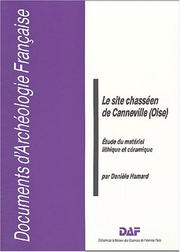
ISSN: 0769010X ISBN: 2735102351 2735125661 9782735102358 Year: 1987 Volume: 11 Publisher: Paris : Ed. de la Maison des sciences de l'homme,
Abstract | Keywords | Export | Availability | Bookmark
 Loading...
Loading...Choose an application
- Reference Manager
- EndNote
- RefWorks (Direct export to RefWorks)
Connu dès le XIXe s., le site de Canneville dans l’Oise a fait l’objet en 1974-75 d’une fouille de sauvetage dont le matériel est ici publié par D. Hamard. La céramique, rare et très abîmée, a cependant permis de placer Canneville à la charnière des phases II et III du Chassé en septentrional. Le matériel lithique par contre, abondant et homogène, a autorisé des études statistiques ; une méthode de description propre à ce type d’industrie a été élaborée à cette occasion et a mis en évidence le système de gestion de la matière première. Cet ouvrage s’inscrit dans le contexte d’une recherche en pleine évolution, l’affinement de la chronologie du Chasséen septentrional, et débouche sur une définition du matériel lithique de cette culture. The site at Canneville (Oise) has been known since the XIXth century, mainly through surface finds until the rescue excavation in 1974-75. It supplied the material which is studied here by D. Hamard. The few badly damaged sherds allow nevertheless Canneville to be placed between Phase II and III of the Chasseen of northern France. On the other hand more than 3 000 lithic artefacts make up an homogeneous flint assemblage. Statistical studies lead toa suitable descriptive method and throw light on the raw material management System. This book opens up the way to a definition of the lithic assemblage of the Chasseen of northern France and fits into a field of research which is presently proceeding towards a periodisation of this culture.
Neolithic period --- Excavations (Archaeology) --- France --- Canneville Site (France) --- Oise (France) --- Antiquities --- -Neolithic period --- -New Stone age --- Stone age --- Archaeological digs --- Archaeological excavations --- Digs (Archaeology) --- Excavation sites (Archaeology) --- Ruins --- Sites, Excavation (Archaeology) --- Archaeology --- -France --- Antiquities. --- -Canneville Site (France) --- New Stone age --- SaintMaximin --- Neolithic period - France - Oise --- Excavations (Archaeology) - France - Oise --- France - Antiquities --- Oise (France) - Antiquities --- Néolithique --- céramique --- lithique --- Chasséen --- Canneville --- Campignien --- outillage
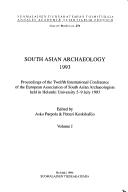
ISBN: 9514107292 9789514107290 Year: 1994 Volume: 271 271 Publisher: Helsinki: Suomalainen tiedeakatemia,
Abstract | Keywords | Export | Availability | Bookmark
 Loading...
Loading...Choose an application
- Reference Manager
- EndNote
- RefWorks (Direct export to RefWorks)
Excavations (Archaeology) --- -Congresses --- South Asia --- -Antiquities --- -Archaeological digs --- Archaeological excavations --- Digs (Archaeology) --- Excavation sites (Archaeology) --- Ruins --- Sites, Excavation (Archaeology) --- Archaeology --- Congresses --- -Asia, South --- Indian Sub-continent --- Indian Subcontinent --- Southern Asia --- Orient --- Antiquities --- Archaeological digs --- Asia, South --- Congresses. --- Asia, Southern --- Asia [South ] --- Excavations (Archaeology) - - Congresses - South Asia --- -South Asia - - Antiquities - - Congresses --- Asie du sud --- Archeologie --- -South Asia --- -Excavations (Archaeology) --- -South Asia -
| Listing 1 - 10 of 182 | << page >> |
Sort by
|

 Search
Search Feedback
Feedback About UniCat
About UniCat  Help
Help News
News